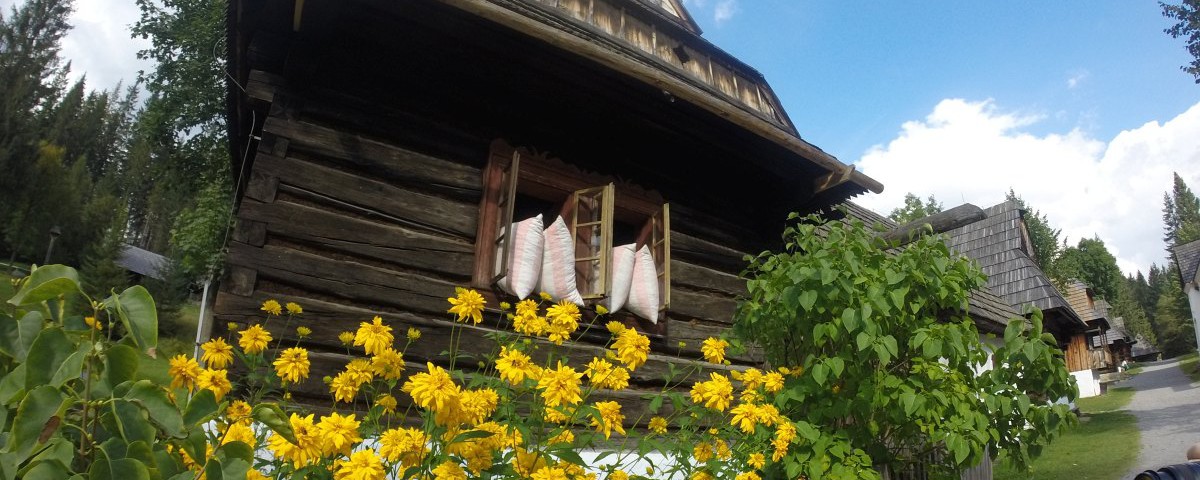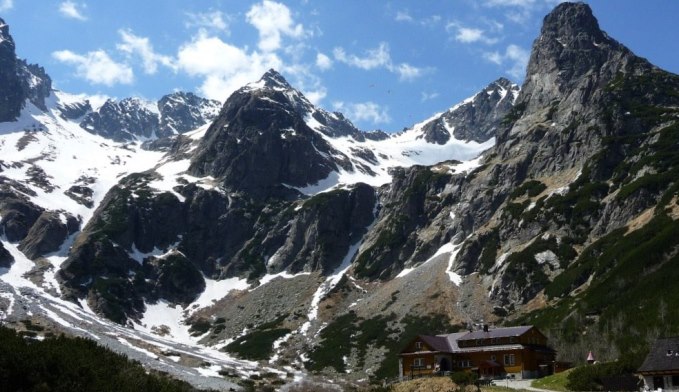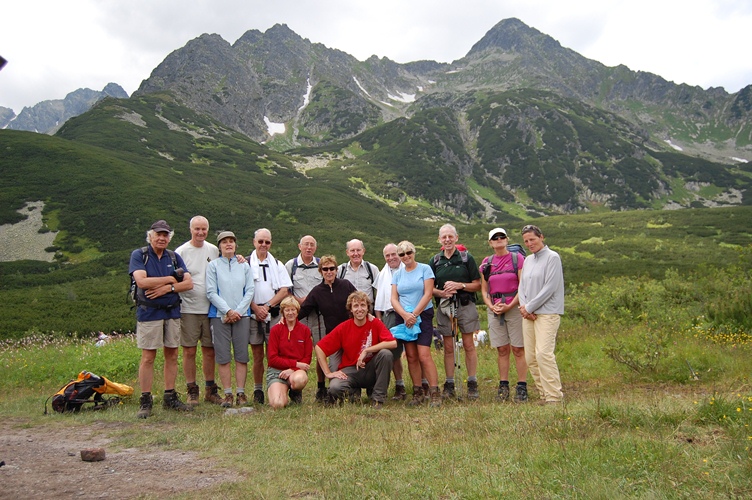List of all UNESCO sites in Slovakia

Top 3 national parks in Slovakia
December 15, 2015
Top 10 places ,,must see,, while in Slovakia
January 12, 2016List of all UNESCO sites in Slovakia
1. Banská Štiavnica
Banská Štiavnica was written to the list of UNESCO in 1993 due to its magical atmosphere providing connection of nature and history. This town became famous due to large supplies of silver and golden ores which were used in the construction of palaces of kings and queens in Hungary and Austria. Except wealth, Banská Štiavnica was once a city of education as Maria Theresa established the first technical university in the world there. Nowadays, Banská Štiavnica is connected with explorations of mines, swimming in artificial lakes called tajchy, enjoyable religious paths in Calvary and in the local churches and castles and with various alternative summer film and music festivals.
2. Vlkolínec
Vlkolínec as a small village in the northern Slovakia is considered to be the one of the best-preserved conservation areas of traditional folk architecture in Slovakia. Therefore, due to its marvellous wooden buildings it became part of UNESCO heritage in 1993. The legends say that the name of the village comes from wolves as they use to live in this region or from holes in the ground used for hunting wild animals or for protection against enemies. Village is famous for more than 40 traditional wooden houses with clay and rocky foundations and shingled roofs and painted natural and geometrical ornaments. Except tours, there is possibility to enjoy traditional life with folklore, crafts and agriculture during various cultural events.
3. Spiš Region
This region lies in the north-eastern part of Slovakia and is considered to be the one of the most beautiful in Slovakia due to its dominant Spiš castle, biggest in central Europe, and its surroundings – concerning Spiš Chapter, Spišské Podhradie, Church of the Holy Ghost in Žehra, which provides natural as well as historical attractions and hence has been part of UNESCO since 1993 and later since 2009 with town of Levoča.
Levoča
This town belongs among several top historical treasures in Slovakia with its valuable sights in the square protected by still well-preserved town walls. Except houses of townspeople build with Renaissance influence, there is Church of St. Jacob – one of the greatest sacral sights in Slovakia. Curiosity of the church is in its unique interior – wooden gothic altar by Master Paul from Levoča which is the highest altar of this type in the world (18.62 m). Tours usually don’t omit Levoča town hall as it presents documents of the town and nearby Mariana hill which serves as a centre for pilgrims of Virgin Mary.
Spiš castle
Spiš castle is considered to be the biggest castle in central Europe as well as the national symbol of the republic. The sight dates back to the 12th century when it served for fortification and later became a seat of administration and government of Hungarian kings and nobility in its golden age in the 15th century. Although there are mainly ruins nowadays, it has never been conquered but it suffered from great fire. Tours of Spiš museum are dedicated to the presentation of the history of the castle and region, presentation of medieval weapons, rooms, kitchen and torture chamber. However, the greatest experience is offered during the summer cultural medieval festival in the castle.
Spiš Chapter
On the west side of the lower castle, there lies Spiš Chapter. The former religious town also called Slovak Vatican was established on the crossroads of the commercial paths below the castle. Nowadays it serves as a seat of Spiš diocese. The important sight in the town is gothic Cathedral of St. Martin built originally in Romanesque style.
Spišské Podhradie
This little town has lain below the castle and served as a centre for crafts. Tourists can admire set of gothic-renaissance houses of townspeople with typical big gates bordering the square and streets and several remarkable sacral buildings as the Church of Virgin Mary with precious gothic altar of St. Barbora and nearby chapel for pilgrims providing great view on the cathedral and castle.
Church of the Holy Ghost in Žehra
This Roman Catholic church complements the whole complex of sights in Spiš region. Its curiosity is its interior with wall paintings presenting various biblical stories. Nearby the church, there is located a travertine hill – natural conservation area Dreveník with precious plants and very attractive view on the surroundings mountainous ranges and Spiš castle.
4. Bardejov
Although this town was recorded to the list of UNESCO in 2000, it won several prizes for its precious historical sights before. History of Bardejov is connected with Middle Ages as the first reference dates back to 1241 and later to the 14th century when it became an independent king city with own privileges. This town is without any doubts called the most gothic city in Slovakia thanks to its best-preserved city walls, rectangular square surrounded with classical renaissance houses and town hall and gothic Basilica minor of St. Egidius from 14th century with eleven beautifully carved gothic altars in its interior. Curiosity of the town is a complex of preserved Jewish spa and synagogue from the 18th century. Except the history, there are many possibilities for free time – from relaxation in spas, exploring nature and history in the open-air museum up to several festivals and cultural events.
5. Wooden churches
Slovakia is known for its specific wooden traditional architecture. There are more than 40 of these unusual wooden sacral buildings but only the 8 most precious ones became the part of UNESCO in 2008. They are famous for their great preservation of beautifully wood-carved geometrical and natural flower ornaments, painted icons, frescos, wooden altars, organs and constructions without the use of nails. The most famous ones are situated in the northern and central Slovakia – Tvrdošín, Leštiny, Hronsek, Kežmarok, Ladomirová. However, the oldest one dates back to the 15th century and is sacred to St. Francis of Assisi in Hervartov.
5. Caves and Karst areas
Slovakia is exceptional not only for the number of castles and wooden churches but for the natural beauties = caves, as well. There are more than 6 200 caves in Slovakia, although just 18 of than are open for tourists, some for individuals, some just with experienced guides. The most unique were recorded to UNESCO in 1995 ale later Dobšinská Ice cave was added in 2000. One of the most interesting is Ochtinská Aragonite cave with the marvellous presentation of various forms of aragonite reminding corrals, crystals or spirals. Other interesting are Domica – the biggest one in Slovakia continuing to Hungary with flowing river Styx which is possible to float over, Gombasecká cave – with display of unique stalactites which are very long and thin and hence resemble rocky rain, Jasovská cave with high concentration of salt and humidity and hence having great remedial effect and Dobšinská Ice cave – the lowest ice cave in the world with valuable ice columns, icy waterfalls and stalagmites.
6. Carpathian Beech forests
There are 3 protected areas which lie in the eastern part of Slovakia in the national park Poloniny and one in the area of Vihorlat. They are considered to be the most forested ones in Slovakia and for their calm and magical atmosphere of virgin nature they became a part of UNESCO in 2007. These forests are an example of original forests with wild fauna (bears, wolves, lynxes, bisons and elks) and flora without any influence of humankind. The dominant plant is beech growing up to 40 m and living for 250 years, although the queen of all trees is 500 years old and 50 metres high fir. There are marked paths for visitors or possibility to go with a guide for having a better experience.
7. Fujara – Slovak overtone flute and traditional music
Slovakia is famous also for its folk tradition and culture with inseparable music and songs played by typical overtone flute which has been also a part of UNESCO since 2005. Birthplace of this instrument is considered to be in central Slovakia where its purpose was just for sending signals. Later it developed into musical instrument which was played by shepherds during pasturing flocks, various cultural events and celebrations and hence the motives were traditional – pastoral, love and bandit. The instrument is mainly made from elder wood for its good structure and sound qualities. Fujara is special not only for its complicated production and exceptional tones but for fascinating ornamental decoration, as well.




